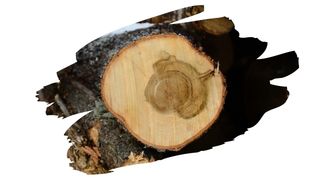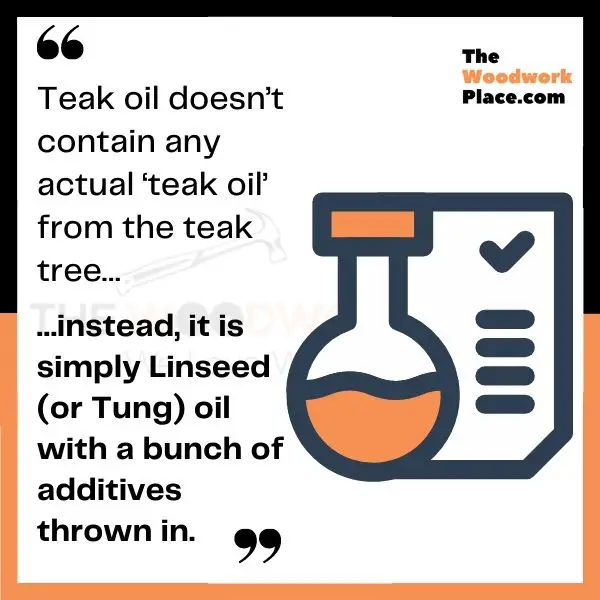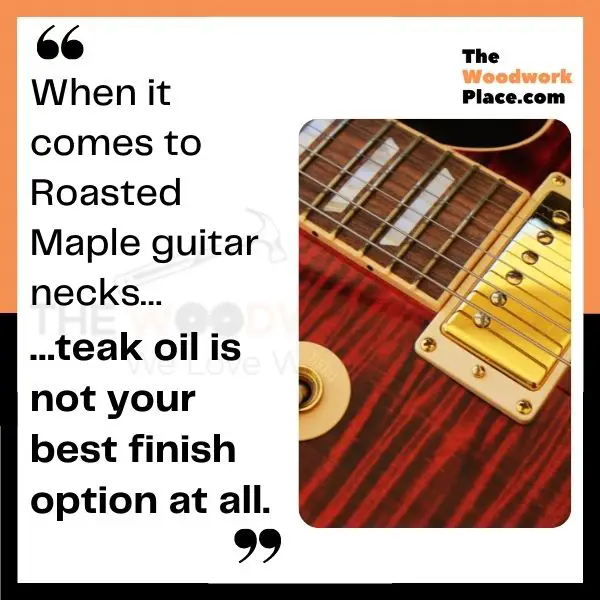You rarely want to leave bare wood unfinished.
If you do, that wood could dry out and crack. Or it could end up absorbing moisture, causing it to rot and decay. And even UV rays from sunlight can cause bare wood to fade.
But, despite all this, sometimes leaving wood unfinished can be the best thing for it.
For example, wood types that are naturally very dense and oily – such as Rosewood – don’t need a penetrating oil finish to help them become more moisture resistant.
Still, what about Maple wood? This solid hardwood lumber is used to make everything from cabinets to floors to guitar fretboards. So, does this hardwood timber need a finish, or can it do well bare?
Well, raw maple wood needs a sealing finish, otherwise it’s very susceptible to damage and decay. But, because of maple’s tight straight wood grain, it doesn’t soak up penetrating oil stains and/or finishes all that well.
Penetrating drying oil stains won’t soak evenly into Maple – leaving behind blotchy results. And penetrating oils won’t soak into this hardwood lumber as deeply either.
However, an oil finish will still be able to build up resin on the surface of maple wood, protecting this lumber all the same.
Now, when it comes to drying oil finishes, there are generally only two basic natural oils that are used on wood; Linseed oil and Tung oil. These two natural oil finishes have been used for centuries to protect wood.
What Is A Drying Oil Finish? A drying oil finish is a penetrating oil finish that dry’s and cures into a hard durable resin coat. While a non-drying oil finish is a penetrating oil finish that does not cure into a solid hard coat.
Most other types of popular drying oil finishes, (such as Danish oil, Tru oil, and Teak oil), are not natural oils.
Instead, these particular finishes are oil blends. They mix natural oils, (like Linseed and Tung), with varnishes and thinners. These additives make these oil blends much thinner, and help them dry faster than a natural oil.
Related Post: What You Need To Know About Danish Oil vs Tru Oil
But, when it comes to teak oil specifically, will this particular finish go well on maple wood?
Well, teak oil is made from a blend of Linseed or Tung oil, mixed with varnish and mineral spirits. This finish is thinner than either Linseed or Tung, allowing it to penetrate wood a little more deeply than Linseed or Tung oil alone.
If you were to apply teak oil onto maple, it’ll protect it from moisture, and leave behind a deep matte water-repellent finish on the surface.
Is Teak Oil A Drying Oil? Yes, teak oil will dry, cure, and harden into a brittle resin.
But, the type of maple wood you’re finishing matters.
You see, not all maple wood crafts are made from raw untreated maple hardwood. Some acoustic guitar necks are made from what is called ‘Roasted Maple’.
Roasted Maple is made from maple wood, however, this special type of maple has been put through a heat treatment.
This treatment darkens (almost caramelizes) otherwise pale maple. But, more importantly, it makes maple more resistant to warping and moisture damage.
And, when it comes to these special Roasted Maple guitar necks, teak oil is not your best finish option at all.
So, keep reading to discover what makes roasted maple so unique, as well as what kind of finish you should be using on this special heat-treated maple…

This post may contain affiliate links to products that we receive a commission for (at no additional cost to you). Learn more here.
Can You Use Teak Oil On Any Kind Of Maple Wood?
Well, that depends on the type of maple wood you’re finishing;
Raw Maple Wood
Raw maple wood is simply untreated maple. This naturally reddish-white lumber comes from the Sugar Maple Tree (also known as ‘Acer Saccharum’)
Now, teak oil goes great on raw Maple wood. This oil/varnish blended product will protect maple just as well as it would any other hardwood type.
But, just to be clear, this oil product doesn’t contain any actual ‘teak oil’ from the teak tree. Instead, it’s simply Linseed (or Tung) oil with a bunch more additives thrown in.

How Many Coats Of Teak Oil Should I Use?
On guitar necks, around 2-3 coats will suffice. Make sure you coat it on thinly (using a lint-free rag, not a brush).
And always let each coat soak right in for 24 hours, before wiping off all excess oil in preparation for the next coat.
Does Teak Oil Change Woods Color? Does It Darken Wood? Teak oil made from Linseed oil will significantly darken wood over time. This is commonplace for most linseed oil based finishes.
Related Post: Tru-oil vs Linseed Oil: The Top 5 Things You All Wanted To Know
Roasted Maple Wood
Notably used for guitar necks, roasted maple wood is the deeply burnished version of maple wood.
Put through a heating treatment – which involves slowly heating the wood inside a kiln – this treatment process turns raw maple wood into something much lighter-weight and more stable.
Now, you could coat teak onto roasted maple, but it would be wasted effort. Unfinished roasted maple wood guitar necks rarely warp.
You see, the main aim of a penetrating oil finish is to make wood stable. They do this by coating wood fibers with moisture resistant resin.

When wood fibers absorb water – and then dry out afterwards – they expand and contract. This movement makes wood unstable… otherwise referred to as warping.
Related Post: What To Do When Solid Wood Cabinet Doors Start Warping (Solved!)
However, if roasted maple is already doing a good job of being stable all on its own, then a teak oil coat won’t offer much, other than a change of appearance.
At the end of the day, the best kind of finish for roasted maple wood is nothing at all. So, just leave this particular type of guitar neck unfinished, and let it breathe.
References
https://www.wri.org/insights/building-sustainable-guitar-maple



